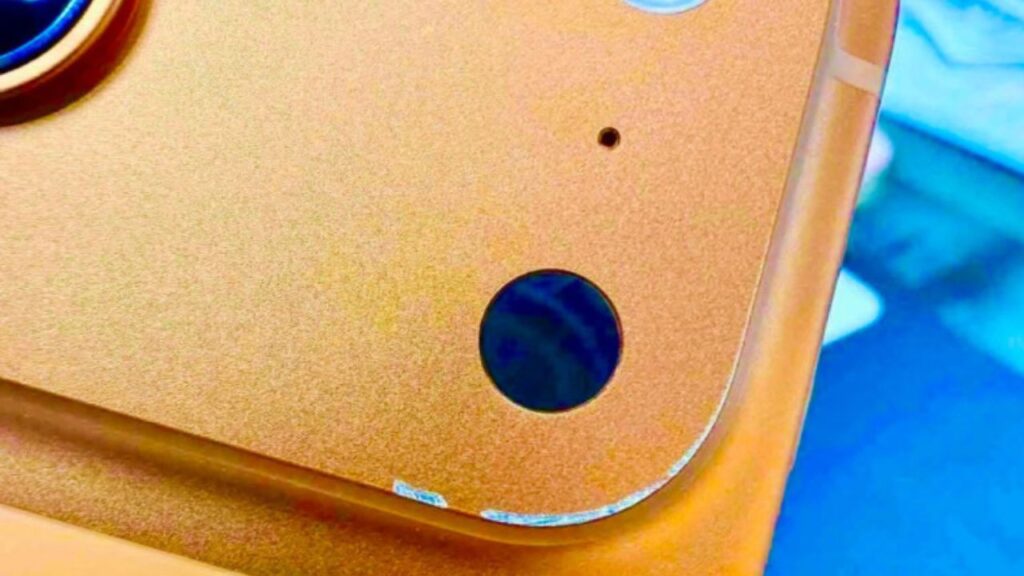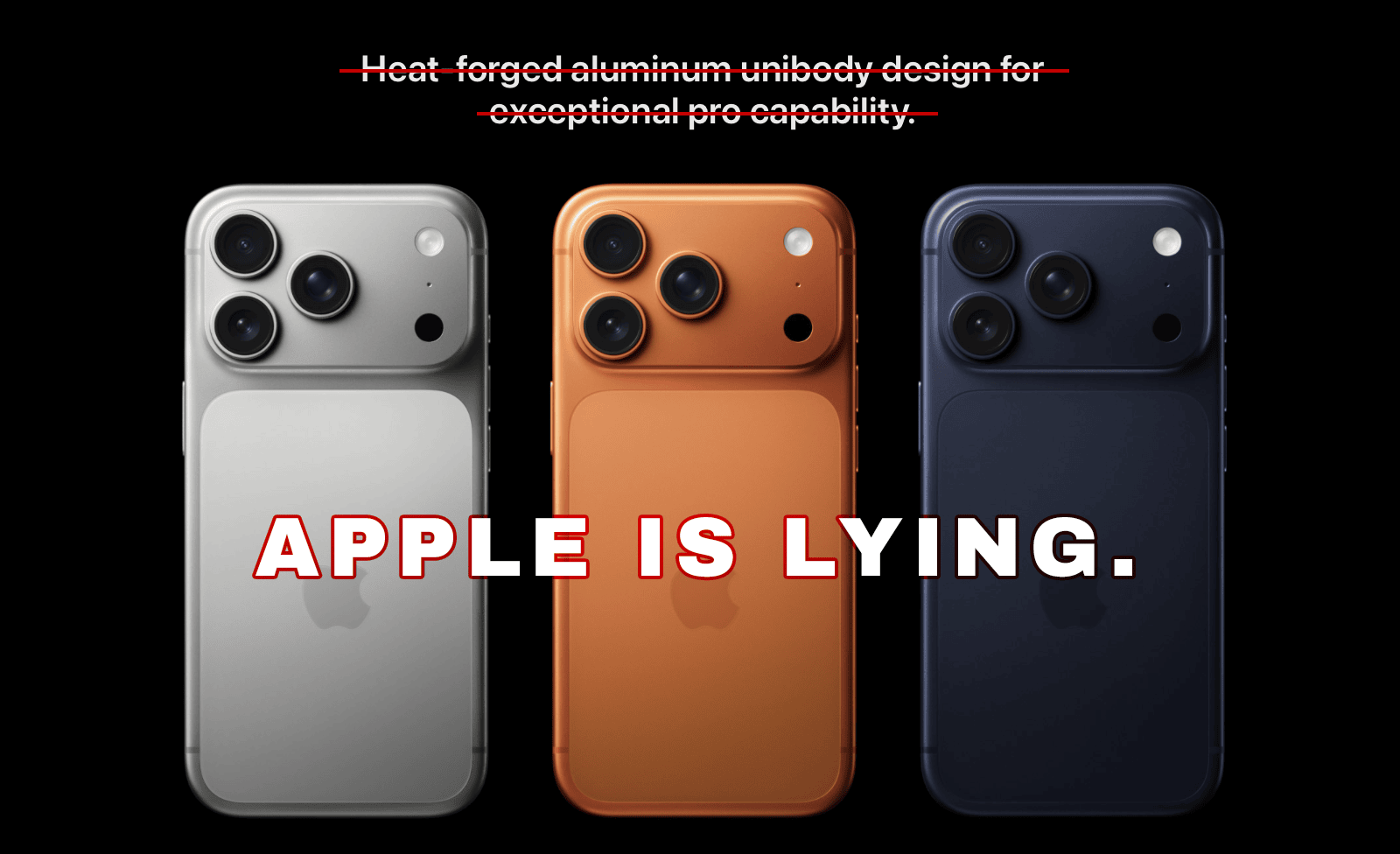In the high-stakes world of smartphone launches, Apple’s iPhone 17 Pro arrived in September 2025 with a design twist that sent shockwaves through the tech community: a return to aluminum frames after two years of titanium hype. What was pitched as a “premium” upgrade with the iPhone 15 Pro now feels like a downgrade, complete with early reports of scratches marring the glossy finish and whispers of cost-cutting motives behind the switch. Apple claims it’s all about better heat dissipation to keep the new A19 Pro chip cool under pressure, but skeptics – including supply chain analysts and teardown experts – argue it’s a calculated move to protect profit margins amid rising titanium costs and manufacturing headaches. As users flock to Apple Stores, trading in their battle-tested titanium models for these sleeker (but apparently scuff-prone) aluminum ones, let’s unpack the drama, the “quality” issues, and the dollars at stake.

The Great Material Swap: Titanium’s Fall from Grace Apple’s titanium era began in 2023 with the iPhone 15 Pro, where Grade 5 titanium (a lightweight, aerospace-grade alloy) replaced the hefty stainless steel of prior Pro models. Marketed as a breakthrough for its strength-to-weight ratio – 45% lighter than steel while being twice as strong as aluminum – titanium promised a phone that felt premium without the brick-like heft. The iPhone 16 Pro carried the torch, weighing in at 199 grams for the 6.3-inch model, with the frame contributing roughly 40-50 grams of that total (based on teardowns from iFixit and similar analyses).Fast-forward to 2025, and the iPhone 17 Pro ditches titanium entirely for a unibody aluminum design using aerospace-grade 7000-series alloy. Apple touts this as an engineering win: aluminum is lighter (potentially shaving another 5-10 grams off the frame for a total device weight around 185-190 grams), easier to machine at scale, and – crucially – far better at shedding heat. Thermal conductivity? Aluminum wins handily, clocking in at about 237 W/m·K compared to titanium’s measly 21.9 W/m·K. Paired with a new vapor chamber cooling system, this setup aims to banish the overheating gremlins that plagued the iPhone 15 Pro during intensive tasks like 4K video editing or gaming.But not everyone’s buying the thermal fairy tale. Bloomberg’s Mark Gurman and analyst Ming-Chi Kuo have pointed to manufacturing realities: titanium’s brittle nature leads to high scrap rates (up to 30% in CNC milling), specialized tooling that wears out fast, and slower production lines – all inflating costs by 20-30% per unit. Environmental angles play in too; aluminum’s lower carbon footprint aligns with Apple’s 2030 neutrality goals, especially since recycled aluminum makes up much of the internal structure. Still, for a $1,199 starting price, trading “space-age” titanium for “everyday” aluminum feels like a bait-and-switch, especially when the iPhone 17 Air keeps titanium to differentiate the ultra-thin model.

Scratchgate 2.0: Aluminum’s Shiny Achilles’ Heel If the material switch was meant to usher in a new era of durability, early user reports and lab tests suggest otherwise. Dubbed “Scratchgate” by social media sleuths on Reddit and X, the iPhone 17 Pro’s anodized aluminum finish – that vibrant Cosmic Orange or Deep Blue hue – is chipping faster than expected, particularly around the camera plateau and corners. YouTube durability tester JerryRigEverything put it through the wringer: while the flat aluminum body resisted scratches from keys and coins (Mohs hardness level 6-7, on par with prior anodized iPhones), the raised camera edges flaked off under a level 4 tester (think copper penny hardness), exposing bare silver metal underneath.iFixit’s teardown dives deeper: the anodized layer, meant to harden the soft aluminum (which scores a mere 2.75 on Mohs), is “brittle” on edges due to the unibody’s sharp forging. Unlike titanium’s brushed finish, which hides micro-abrasions, aluminum’s glossy anodization turns every pocket lint or desk rub into a visible scar. Apple Store demo units were hit hardest initially – scuffs around MagSafe cutouts turned out to be “material transfer” from worn display stands, easily wiped off with isopropyl alcohol. But real-world owners aren’t so lucky; Tom’s Guide’s review unit showed “small scratches all over the back” after a week of naked use, with darker colors like Deep Blue amplifying the damage. Apple’s response? A curt acknowledgment that the camera plateau edges match other anodized products (like MacBooks), plus a nudge toward cases. Critics call it deflection – after all, titanium models shrugged off similar abuse with nary a mark. Bend tests fare better (no iPhone 6-style “bendgate” thanks to the 7000-series alloy’s rigidity), but the consensus is clear: aluminum prioritizes thermals and weight over the “premium” scratch resistance titanium delivered. For early adopters, it’s a reminder that “unibody” might just mean “unforgiving.”
Apple’s Heat Defense: Genuine Innovation or Profit Padding?Officially, Apple swears by the switch for performance gains. The A19 Pro chip, with its beefed-up Neural Engine for Apple Intelligence, runs hotter than ever – up to 10-15% more thermal output under AI workloads, per leaked benchmarks. Titanium’s poor heat spread forced throttling in the iPhone 16 Pro during prolonged 4K 120fps recording, but aluminum + vapor chamber combo promises sustained speeds without the fanfare (or lack thereof) of competitors like Samsung’s Galaxy S25 Ultra. It’s a valid point: tests show aluminum dissipating heat 33 times faster than titanium, potentially extending battery life by 5-10% in heavy use. Yet, the cynicism runs deep. Leaks from supply chain sources like Jeff Pu suggest Apple balked at titanium’s escalating costs – raw prices spiked 15% in 2024 due to aerospace demand and geopolitical tensions over rare earths. With the iPhone 17 Pro’s slimmer, unibody redesign (thinner bezels, integrated back panel), sticking to titanium would require more material to maintain structural integrity – think 20-30% thicker walls to compensate for aluminum’s lower strength (titanium’s yield strength is ~830 MPa vs. aluminum’s ~500 MPa). Analysts estimate this “way more titanium” scenario could balloon frame costs by $15-25 per unit, eroding Apple’s industry-leading 40%+ gross margins on iPhones.Is it greed? Apple’s not hurting – iPhone sales hit 232 million units in 2024 – but in a market squeezed by Android rivals offering titanium frames at half the price (e.g., Xiaomi 14 Ultra), shaving costs lets them fund flashier features like the 100mm tetraprism lens without hiking prices. As one Reddit thread quipped: “Stainless to titanium for ‘premium,’ now back to aluminum for ‘sustainable’ – it’s the circle of cost-saving life.” If thermals were the sole driver, why not hybrid frames like the iPhone Air’s? The math – and the margins – tell a profit-protecting tale.
Crunching the Numbers: The Titanium Tax Apple Dodged To quantify the “profit squeeze,” let’s calculate the material cost delta for the iPhone 17 Pro frame. We’ll use conservative estimates based on 2025 market data and teardowns (iPhone 16 Pro frame ~45g titanium; iPhone 17 Pro ~35g aluminum, adjusted for unibody efficiency and similar overall dimensions).
| Material | Density (g/cm³) | Frame Weight (g) | Raw Cost per kg (USD) | Material Cost per Unit (USD) |
|---|---|---|---|---|
| Titanium (Grade 5) | 4.43 | 45 (scaled up 20% for rigidity in unibody) | 20 | 0.90 |
| Aluminum (7000-series) | 2.81 | 35 | 2.20 | 0.077 |
Step-by-Step Calculation:
- Weights: iPhone 16 Pro titanium frame ≈45g (per iFixit/Supply chain reports). For iPhone 17 Pro’s slimmer unibody, aluminum needs less mass for equivalent strength (~35g, leveraging higher volume efficiency). Titanium alternative? To match aluminum’s bend resistance without internal reinforcements, it’d require ~20% more material (54g total), as titanium’s superior strength allows thinner walls but demands extra for edges/corners in a full unibody.
- Costs: 2025 spot prices – titanium at $20/kg (up from $15/kg in 2023 due to demand); aluminum at $2.20/kg (stable, recyclable). These are raw; add 50-100% for machining (titanium’s scrap/wear doubles labor).
- Per-Unit Delta: Titanium: 0.054 kg × $20/kg = $1.08. Aluminum: 0.035 kg × $2.20/kg = $0.077. Extra spend on titanium: $1.08 – $0.077 = $1.00+ per phone (raw only; full BOM ~$15-20 more with processing).
- At Scale: For 80 million Pro units annually, that’s $80-1.6 billion in avoided costs – enough to fund R&D for years without touching retail prices.
This isn’t pocket change; it’s why Apple can tout “vibrant finishes” (anodizing aluminum is cheaper than PVD-coating titanium) while keeping margins fat. If they stuck with titanium, that $15-25/unit hike (including supply chain premiums) could’ve forced a $1,299 price tag or slimmer profits.
Premium Price, Everyday Durability: What’s Next for Pro? The iPhone 17 Pro isn’t a lemon – its A19 Pro crushes benchmarks, the vapor chamber keeps it cooler than a Samsung, and the unibody feels sleek. But the scratches? They’re a wake-up call that aluminum trades titanium’s “indestructible” aura for practicality. If Apple’s heat defense holds (and early thermals tests suggest it does), this could redefine “Pro” as performance-first, not material flex. Still, with “Scratchgate” memes flooding X and Reddit users hoarding titanium holdouts, expect case sales to boom.Bottom line: Love it or loathe it, the switch saves Apple a fortune while chasing efficiency. But in a world where $1,200 buys you a phone that chips like cheap jewelry? That premium feel just got a lot less titanium-solid. If you’re eyeing an upgrade, snag a case – or stick with your 16 Pro and wait for iPhone 18’s “titanium revival.” After all, in Apple’s game, the real upgrade is always just one cycle away.





